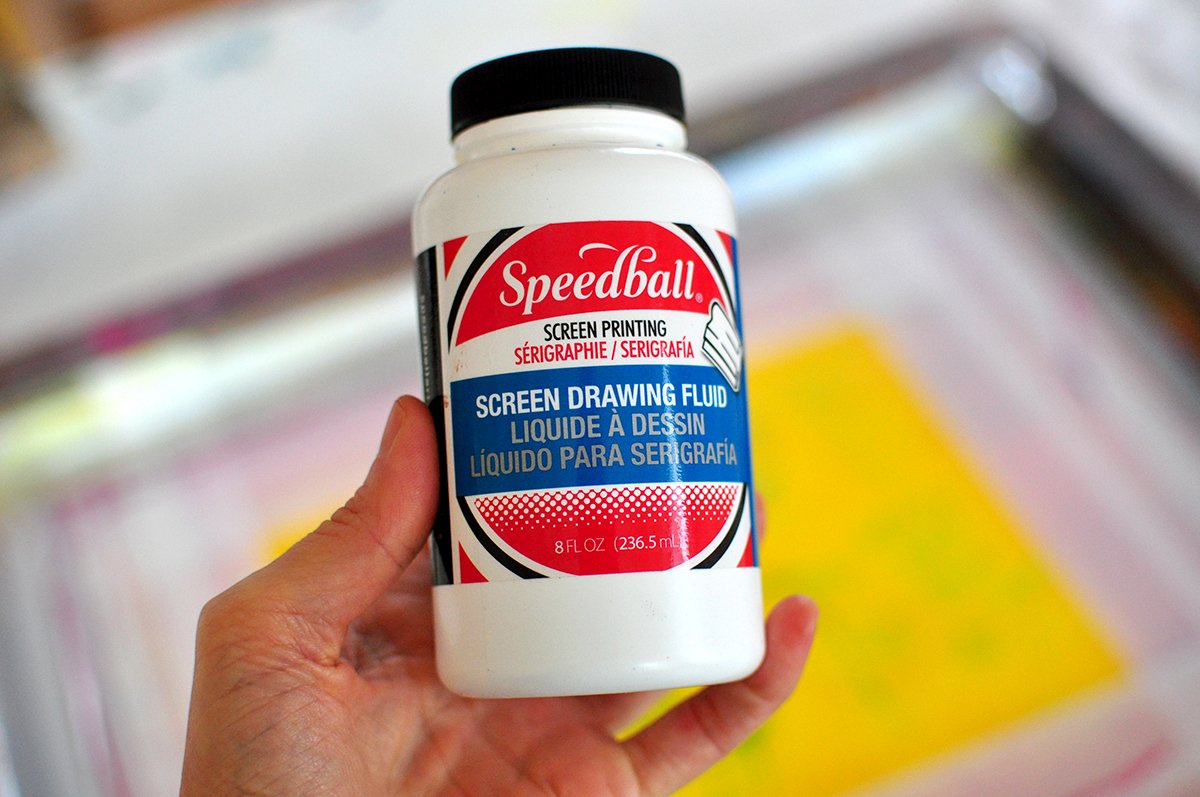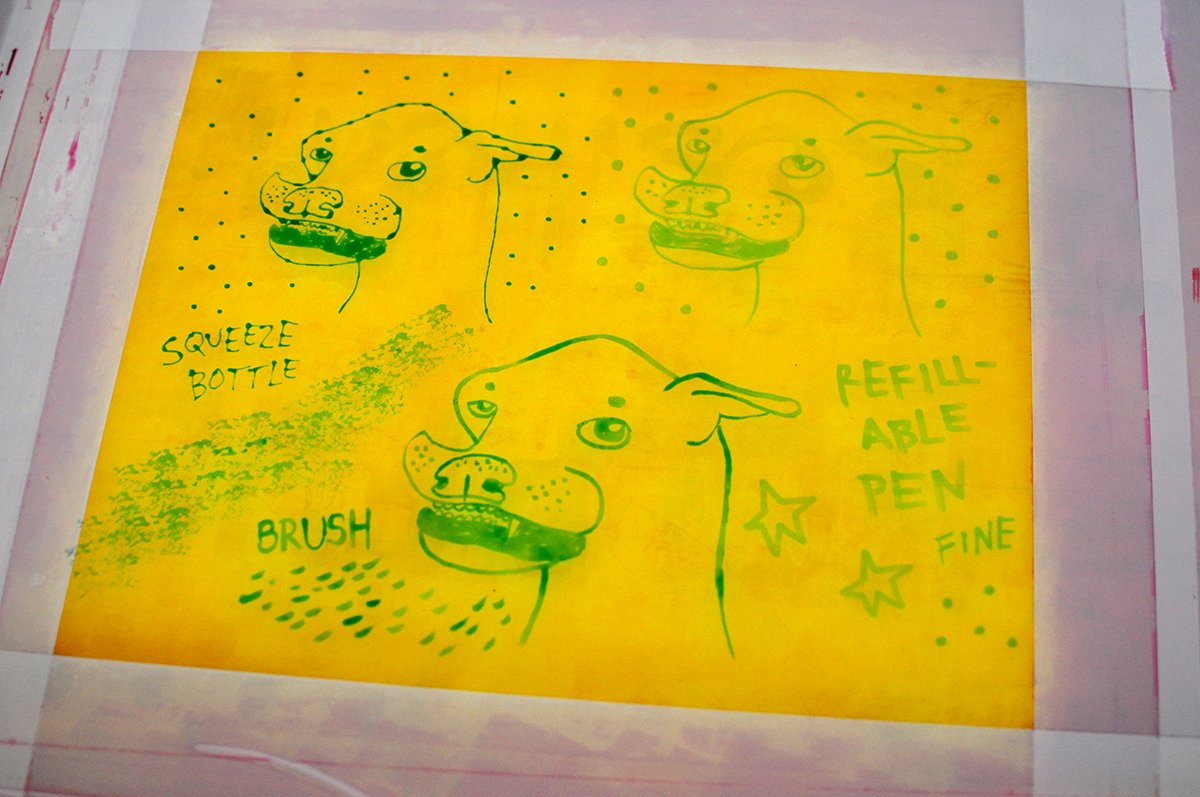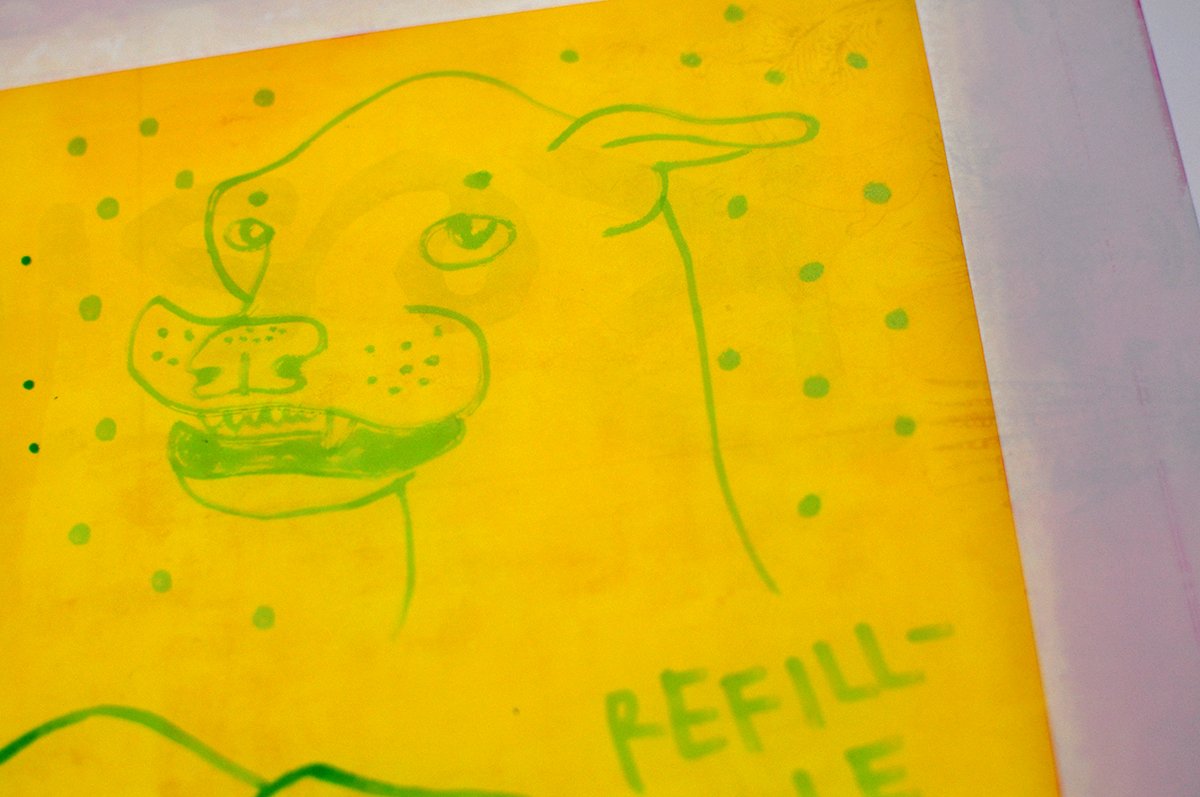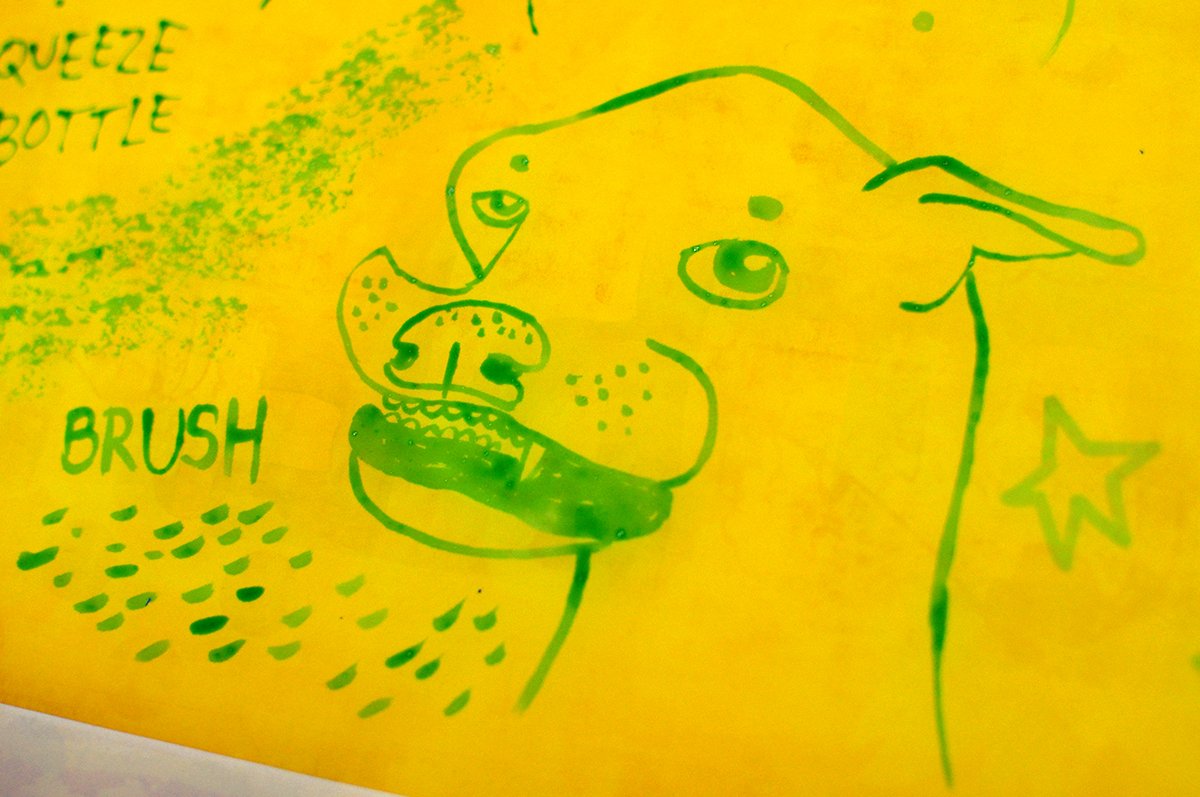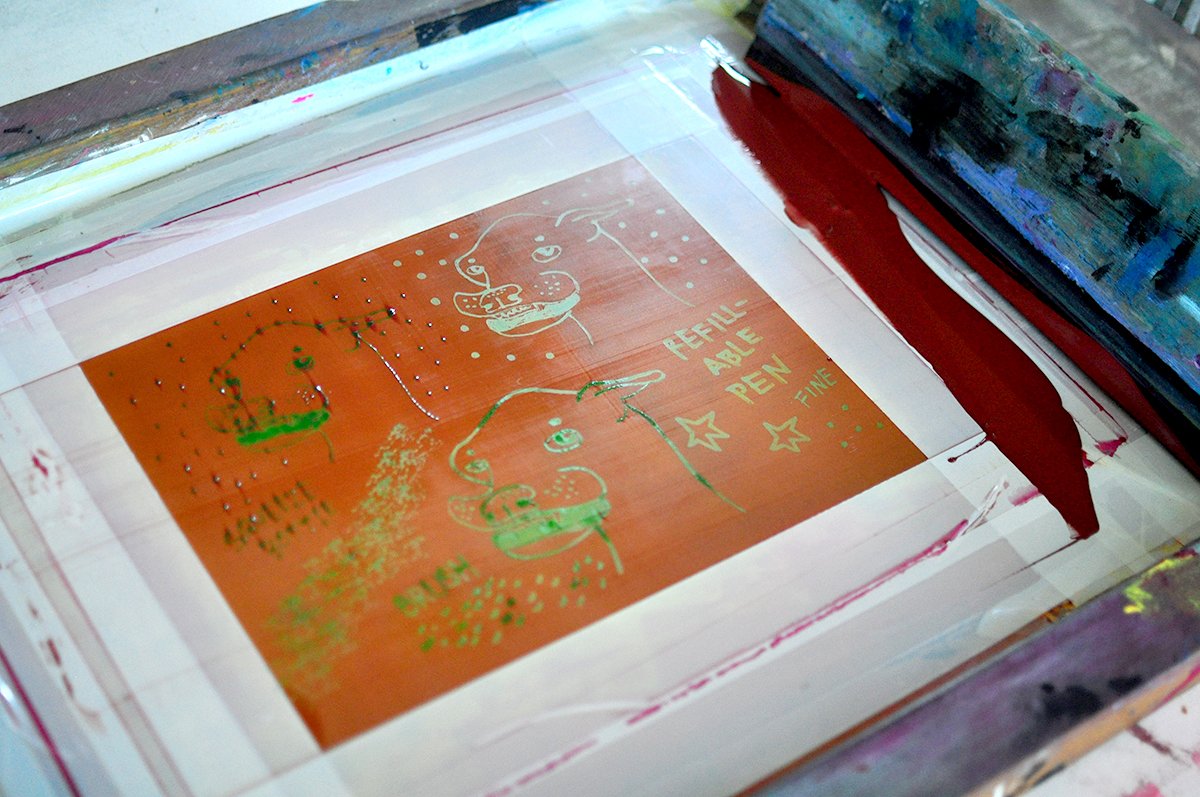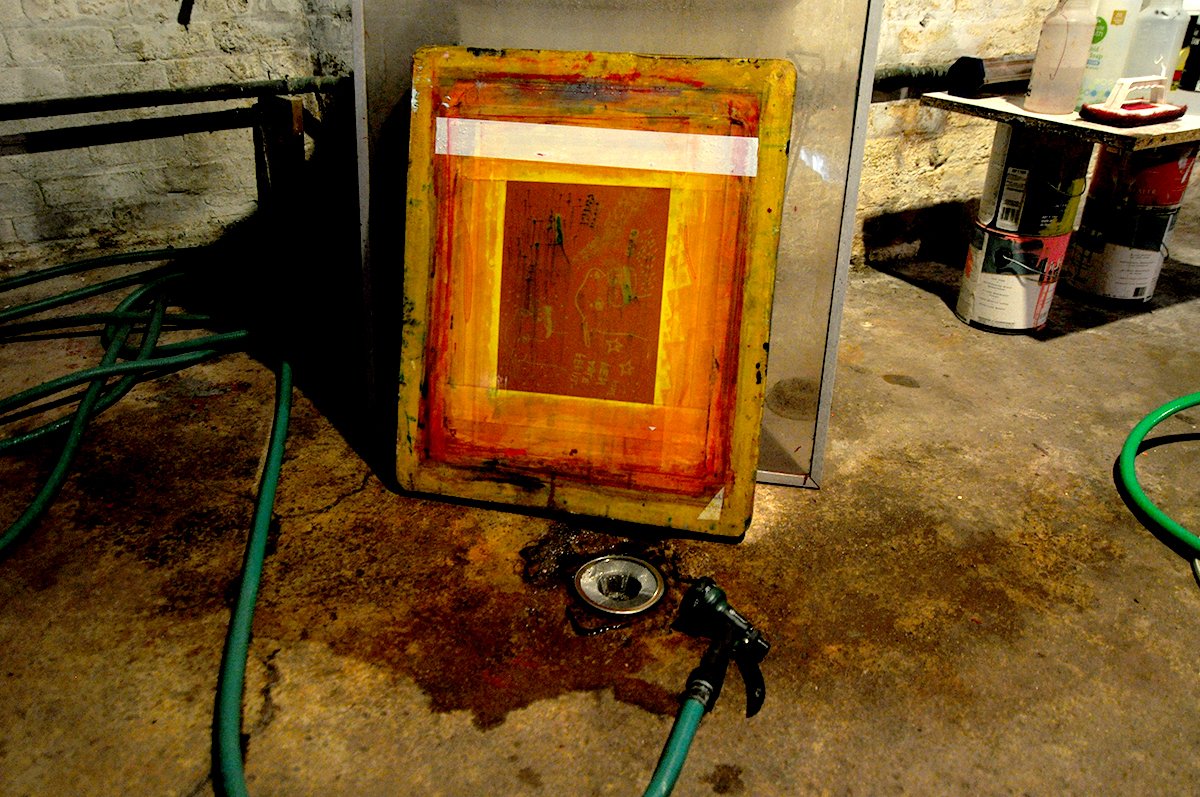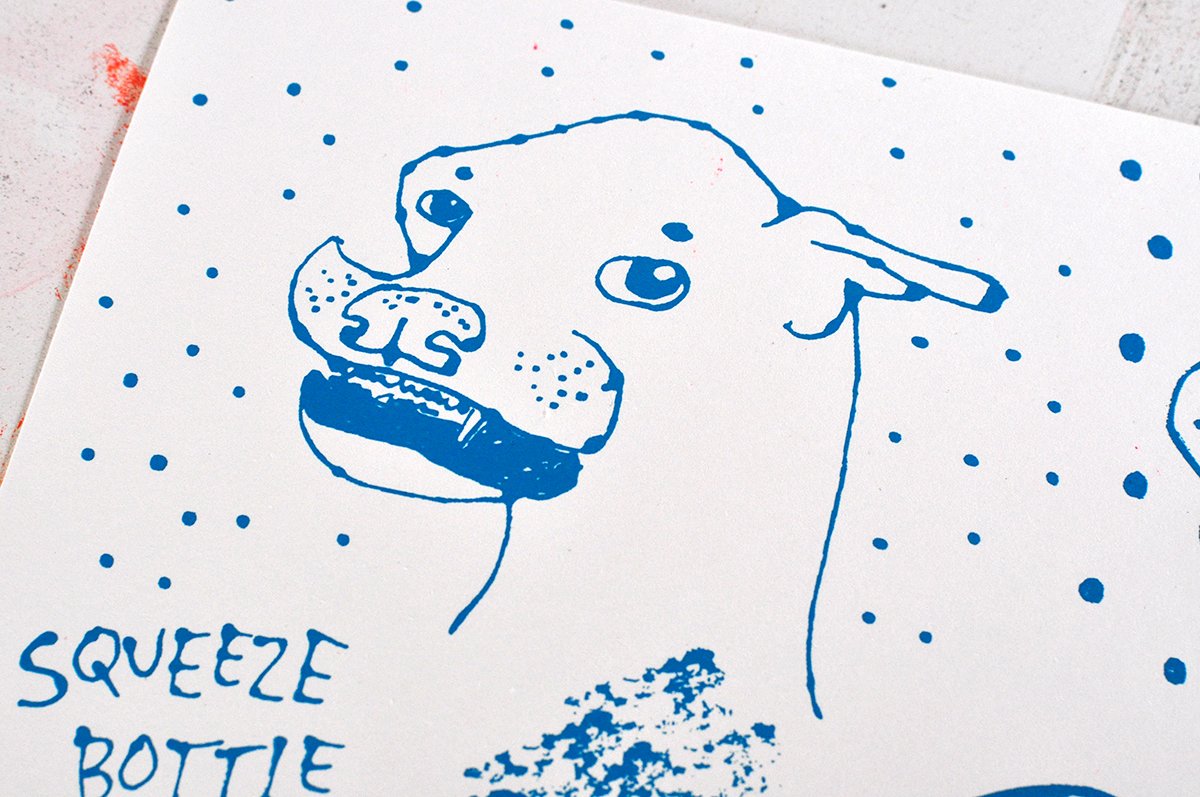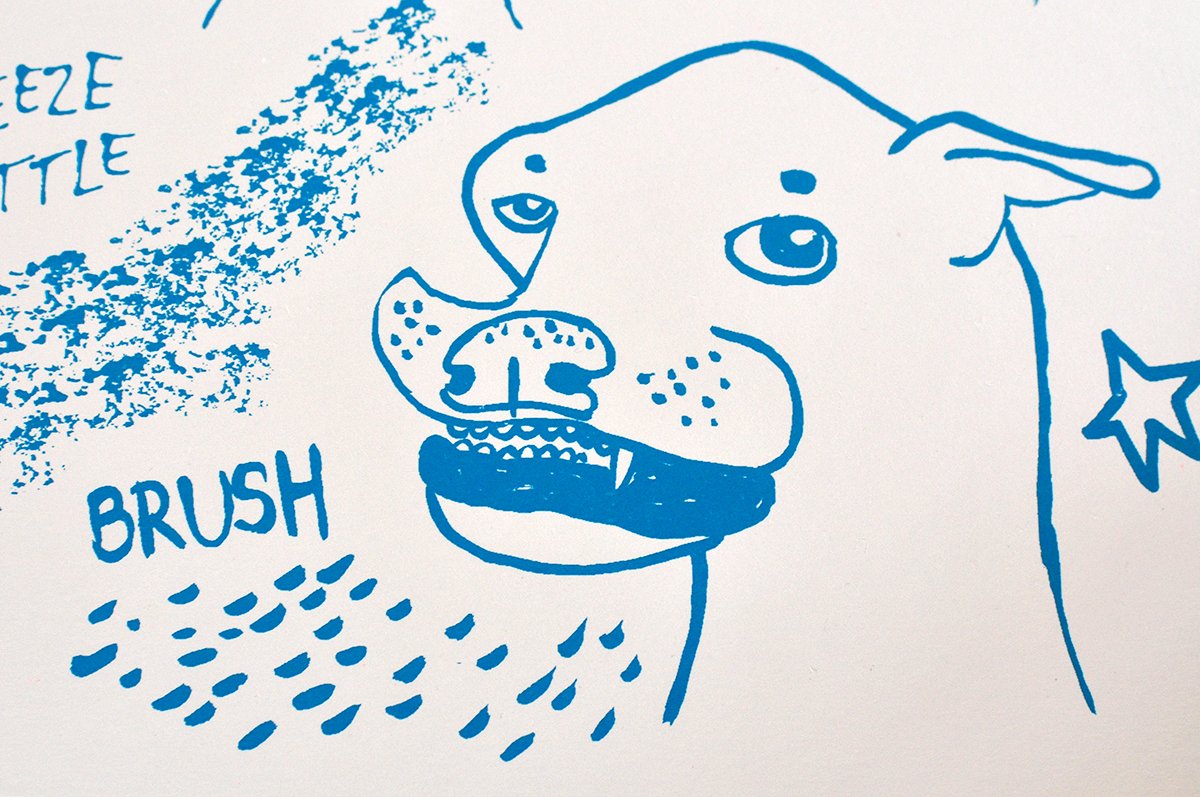In the beginner screen printing workshops that I teach, I use Speedball’s drawing fluid + screen filler combo to teach students an accessible way to make images for their screens. Some people aren’t comfortable with a brush though, so I wondered if we could put that blue goo in another tool and get a different kind of line? I ran some tests, and here are the results!
Speedball’s drawing fluid + screen filler combo is a simple way to start making screen printed art at home. The drawing fluid (blue) goes on first — you draw your drawing with the drawing fluid — let that dry, then coat the screen with screen filler (red). Once that’s dry, you rinse the drawing fluid out of the screen — it resists the screen filler — so what remains printable in your screen is your drawing.
Typically you’ll use a paint brush to paint on the drawing fluid, which gives your image an expressive, painterly feel. But a lot of people aren’t comfortable with a brush or want more control or a different kind of line. To that I wondered what other options are out there and tested/compared four tools (below, from left): a squeeze bottle/“precision applicator,” refillable paint pens, a brush, and a piece of sponge.
The great news is they all worked. Choosing one over the other will depend on what kind of line you want, how long you want to wait for the fluid to dry, and other factors.
Here’s my test screen — I used a drawing of Albert the Great Dane I’ve been working on as the test image.
First we have the squeeze bottle/precision applicator. This one produces a fantastically thin line but also blobs as you draw. It’s probably possible to avoid this if you can super-control your squeeze of the bottle as you draw.
Next is the refillable paint pen. I was surprised at how well this worked. It takes some time to get the drawing fluid to start flowing, but once it does it draws nicely on the screen. It seemed at first like the application of fluid was too thin to resist the screen filler, but it actually worked fine. And it dries super fast. And I’ve left a few of the pens filled with fluid for a few weeks and it hasn’t yet dried in the tip.
Then we have the classic: the paint brush. This is the most common way to apply drawing fluid onto the screen.
I also tested a piece of sponge as an option to create texture instead of line. You can see that between the screen filler sample and the brush sample above.
Once the drawing fluid is dry, you apply the screen filler just like you would ink, with a squeegee, as if you were flooding.
Once that’s dry, you rinse out the drawing fluid. I have a setup in my basement for cleaning screens with a hose over a drain. I know that looks like blood around the drain, but it’s just water.
The blue drawing fluid rinses out, leaving your drawing open in the screen so you can print it!
And here’s the printed results!
Squeeze bottle/precision applicator
Pros: Creates a very fine line that withstands the screen filler
Cons: Applies thick; spreads as it dries; blobs; takes a long time to dry
Pros: Dries super fast; easy to control (just like drawing with a marker)
Cons: Limited in line thinness, depending on the paint pens available to you; fluid is slow to start in a new pen; depending on the quality and thickness of the applicator/tip, lines can be rough/uneven; leaves a “dot” of unprinted area where you lift the pen (see the word “refillable” below)
Paint brush
Pros: Creates expressive, painterly lines; most consistent application of fluid
Cons: Requires the most hand control of the three; can sometimes take a while to dry
And above you can see the texture the sponge created as well, so it’s possible to use different objects to make impressions with drawing fluid to create textures within this technique (doesn’t have to all be drawing/lines!).
All of these tools have potential. For workshops I will probably avoid the squeeze bottle because of the drying time — I try really hard to keep things moving so students aren’t waiting around too long for the next step. But I will continue to experiment with the refillable paint pen, and continue to use paint brushes and objects like sponges to create line and texture.

